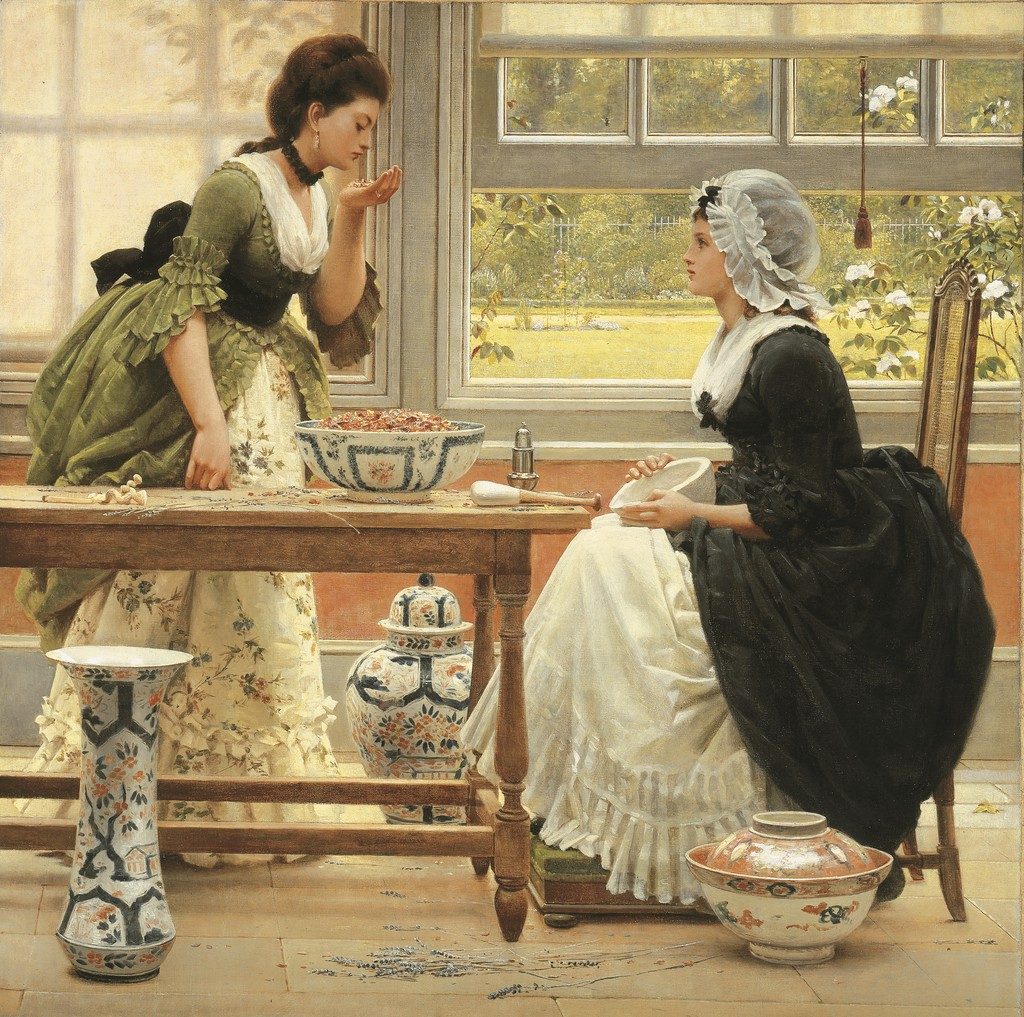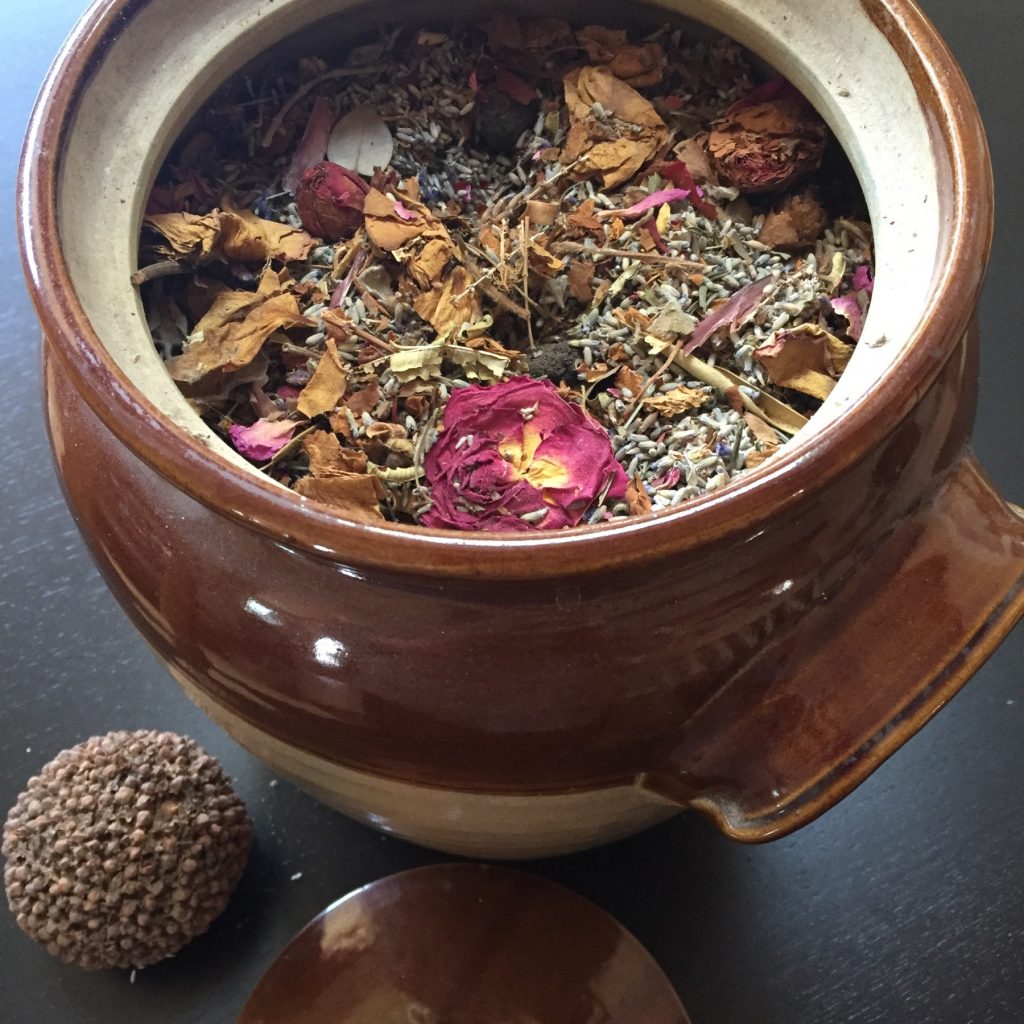A conservatory or greenhouse can be a heavenly – and heavily – scented environment when crammed full with perfumed flowers like jasmine, citrus, and countless other plants that hold fragrance in their petals and foliage. Pot pourri is an amalgam of plant parts preserved by drying and blending that will conserve the scent of garden and greenhouse, to be enjoyed year round. It’s also one of the oldest genteel crafts to come out of the garden, and was one of the most highly valued, old-fashioned skills every “housewife” worth her salt possessed. Sixteenth- and 17th-century recipe books always had a section on how to make pot pourri, as it was the room-freshener of the time, which at its best was less than fragrant.

Spring is a good time to begin planning your pot pourri-making, identifying the plants in your garden and the ones you can add to increase the growing abundance. Sages, artemisias, santolinas, many of which are native relatives of familiar culinary herbs grow throughout the Rocky Mountains and the high plains, and are stalwarts of our waterwise gardens. But fundamental to all pot pourri blends are lavender and roses. And in my garden in the Front Range I find the most satisfactory are Lavender x intermedia ‘Phenomenal’ https://www.anniesannuals.com/plants/view/?id=4644 and the rose ‘Ruby Voodoo’, which to its credit is a Plant Select choice http://plantselect.org/plantstories/ruby-voodoo-a-rose-profoundly-perfumed/ . This is a recently introduced shrub rose with dark red blooms that have their first flush in early summer, and repeat again to a lesser extent throughout the summer. ‘Ruby Voodoo’ is upright growing, hardy and healthy.

There are two sorts of pot pourri: wet, where the petals and leaves are preserved in salt, and dry, which, as the name suggests, is made from air-dried flowers and foliage. Both require the use of a fixative to hold the scent; for dry blends, orris root powder is the classic fixative, and is made from the powdered dry roots of Florentine irises (once a major economic export of the Italian Renaissance city-state). The dry method is the easiest; simply spread out the flowers and leaves on sheets of newspaper in a flat box. Put it uncovered in a dark place; under the bed is a good spot. When crisp dry, toss together in a large bowl with a few tablespoons of orris root powder, along with a few teaspoons of mixed spice (pie spice works for ease). If you like a hint of citrus, toss in some shreds of fresh lemon and/or orange peel. Sprinkle the blend with a few drops of an essential oil (sandalwood is sultry but pricey). Voilá, pot pourri.
Wet pot pourri is made by drying the plant material for a few days until it is leathery to the touch, but not crisp dry, then layering it in a lidded jar with kosher or sea salt as the fixative. Don’t use iodized salt. Add more petals and leaves over the course of a few days until the jar is full. Some recipes call for added spice, but that can get messy.

I’ve been making pot pourri for many years, and have used not just the flowers from my different gardens, but also roses from wedding anniversary bouquets, and ‘souvenirs’ picked in friends’ gardens. In that way the mix has become a sort of album of garden memories that are released into the room each time I take the lid from the stoneware crock. Tucked into the pot pourri is an orange pomander, seen in the bottom left corner of the photo above. This is another age-old treat made by sticking cloves into a fresh orange that you then roll in mixed spices and leave to dry. Space the cloves about an eighth of an inch apart; as the orange dries, the cloves come together to make a spicy carapace and preserve the desiccated fruit.
©Ethne Clarke 2018










